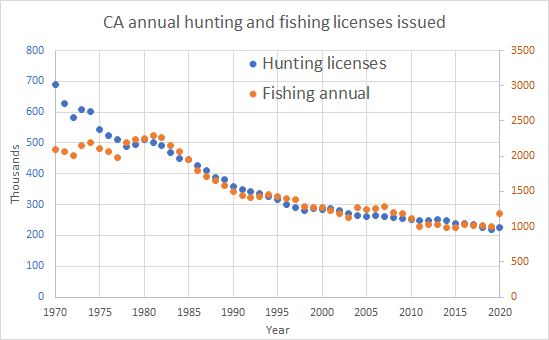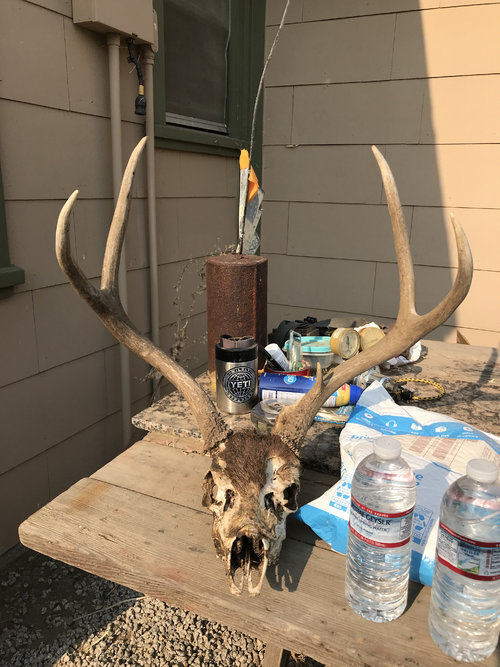With harvest % as low as they are and even lower with respect to total population what benefit (especially on the west slope Sierra and B zones) do you think will occur? I've talked with a few biologists and they say the same thing, in mature forest like B and D zones, we can move tag numbers, but harvest won't change much. In X this is a different story and is why there has been a lot more movement in tag numbers over the years.
Deer tag revenue makes up 1% of the DFG budget. Total hunting license revenue is roughly 5% of the total budget, wit all big game fees reserve for the Big Game Management Account and there is still a structural deficit and a need of more than $100M from the general fund.. The Legislature was able to close some gaps in the budget in the past, but now in the Covid era it is different. Just look at the range of co-signers on this request when it comes to the budget. Groups that don't agree on much, except for the budget challenges in the department.
[URL unfurlI don't think it will make much of a difference. 30,000 tags with a =
I think it will be small innitially but if tags were reduced long term along with other measuers of preditor control, buck to doe ratios and implementing new hunts, forest management and protecting migration routes there might be hope. I'm not trying to talk budgets other than I highly doubt DFW is willing to reduce it even further, and the example I gave D3-5 I guess that those 30000 tags bring in around $1M depending on how many 1st and 2nd tags are issued.With harvest % as low as they are and even lower with respect to total population what benefit (especially on the west slope Sierra and B zones) do you think will occur? I've talked with a few biologists and they say the same thing, in mature forest like B and D zones, we can move tag numbers, but harvest won't change much. In X this is a different story and is why there has been a lot more movement in tag numbers over the years.
Deer tag revenue makes up 1% of the DFG budget. Total hunting license revenue is roughly 5% of the total budget, wit all big game fees reserve for the Big Game Management Account and there is still a structural deficit and a need of more than $100M from the general fund.. The Legislature was able to close some gaps in the budget in the past, but now in the Covid era it is different. Just look at the range of co-signers on this request when it comes to the budget. Groups that don't agree on much, except for the budget challenges in the department.
The point I believe in and think that is the one issue that can be fixed is how DFW manages wildlife. Currently they do not. It is dictated by popular vote of uneducated public who vote for pretty animals. They need to have the ability to make changes to actually manage game and be able to do predator control. I think we are starting to see that mature forests cause all sorts of issues and hopefully will be worked on.
As with all nature, it is a system and that system must now be managed. If not we will not be hunting in California at all any more. So why would anyone become a new hunter in this environment? That what is what we are discussing and all I know is that I might become a statistic in that unless something changes I will stop buying a license in the very near future.
With a 10% success rate or lower, in most OTC units, and the ability to draw a premium tag once every 5-10 years how are we going to hold onto hunters?
Last edited:






